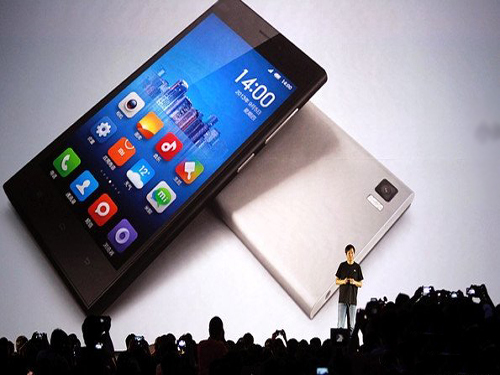According to a recent survey released by the International Data Corporation (IDC), the smart phone market in the Chinese market slowed down in the first quarter of 2015, with shipments declining for the first time in six years. In this regard, the industry analysts pointed out that this situation will continue, because the current Chinese mobile phone market has entered the replacement market, the future of mobile phone users are mostly replacement users. "In this case, prices are no longer a priority for consumers to buy mobile phones. In the long run, the price war of mobile phone manufacturers will not work." Road Traffic Signs are graphical symbols that display traffic regulations and road information. They can make traffic regulations visually, concisely and concisely expressed. At the same time, they also express the content that is difficult to describe in words. They are used to manage traffic and indicate the direction of driving to ensure the smooth flow of roads and the safety of driving. Applicable to highways, urban roads and all special highways, with the nature of the law, vehicles, pedestrians must comply with. Road Traffic Signs Road Traffic Signs,Traffic Light Sign,Road Safety Signs,Highway Road Traffic Signs Yangzhou Heli Photoelectric Co., Ltd. , https://www.heli-eee.com
Analysts say China's smart phone enters the exchange market
On the 11th, a survey released by IDC showed that in the first quarter of 2015, shipments of smart phones in China decreased by 4.3% year-on-year, which fell for the first time in six years.
As for the reason, the president of IDC China, Huo Jinjie, said that the fundamental reason is the gradual saturation of the Chinese smartphone market. According to Tom Kang, research director of market research firm Counterpoint, the smartphone penetration rate in the Chinese market is now over 90%, and China has become a smartphone replacement market. Forbes Chinese website also issued a document yesterday, said that China's new smart phone shipments completely depends on the upgrade to the next popular mobile phone consumer groups.
Wang Yanhui, secretary-general of the China Mobile Phone Alliance, expressed similar views in an interview with the China New Network IT channel. He believes that Chinese mobile phones are currently entering the replacement market, and the decline in mobile phone shipments will continue and tend to stabilize. Wang Yanhui explained that in the past three years, China's smart phone shipments grew at a rapid rate, because it is now in the market environment where smart phones are transformed from functional to smart, and now almost everybody has a smart phone, and consumers with mobile phones are mostly Change demand.
According to the latest data from the Ministry of Industry and Information Technology, in the first quarter of this year, the total number of mobile phone users in China reached 1.29 billion, and the penetration rate reached 94.6 units/hundred people. However, the number of smartphone users has not been disclosed yet.
In response to the decline in China’s smartphone shipments in the first quarter, many media have attributed the reasons to the saturation of the Chinese mobile phone market. However, Samsung said in a statement that although China's smartphones may slow down this year, there is still enough upgrading demand because most Chinese mobile phone users still use low-end and mid-range smartphones.
Mobile phone price war may no longer work
In response to the slowdown in the Chinese smart phone market in the first quarter, some analysts pointed out that Chinese smart phone manufacturers will also be affected by this change. Yesterday, the Nikkei Chinese website said that due to the rapid changes in the market environment, the territory of China’s smartphone power is also changing rapidly.
Wang Yanhui said that from the current situation, China's mobile phone brands will become more concentrated in the future, and competition will become increasingly fierce. "Some small mobile phone manufacturers will be in the competition, and some high-end mobile phone brands or feature mobile phone brands will survive."
"In addition, because the future China's mobile phone market is the replacement market, the price is no longer a key factor for consumers to buy mobile phones, so the mobile phone manufacturer price war is no longer effective, some low-end mobile phone manufacturers will face elimination." Wang Yanhui said.
However, in the short term, the price war is still a good way to increase shipments. The FT Chinese website issued a statement on the 7th saying that under the siege of low-priced mobile phones such as LeTV, the Chinese smart phone market has become "crowded", which led to the pressure of millet forced to lower the price of millet 4 last month. In addition, it is understood that yesterday's sale of millet Note top version also lowered the price to 2999 yuan, and the earliest announced price of 3299 yuan.
Wang Yanhui said that even with this (price cut), Xiaomi Note Top Edition gross profit is still higher than other models of Xiaomi's mobile phone, "And, this will become a symbol of the transformation of Xiaomi to high-end." "The future of Chinese mobile phone users when changing, consider more More is the quality of mobile phones and services, the price has become a secondary factor, which is the starting point for Xiaomi and other mobile phone manufacturers to seek transformation. "Wang Yanhui said.
In addition, in addition to the transition, the Nikkei Chinese Network issued a document yesterday that as the market matures, it is estimated that Chinese manufacturers will accelerate into overseas markets such as Southeast Asia and India. It is understood that, at present, Xiaomi, Huawei, etc. are constantly exploring the overseas mobile phone market, especially the Indian market. Wang Yanhui said, "Now the Indian mobile phone market is in the past three years in China, which is an opportunity for Chinese mobile phone manufacturers."